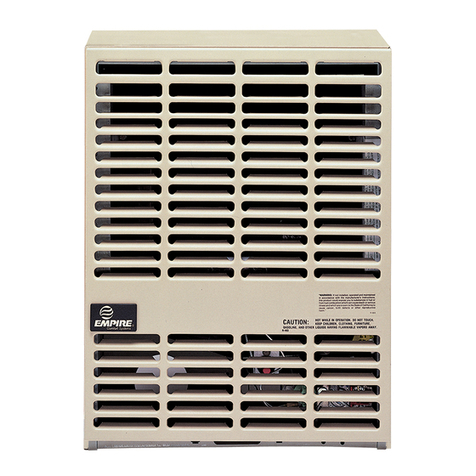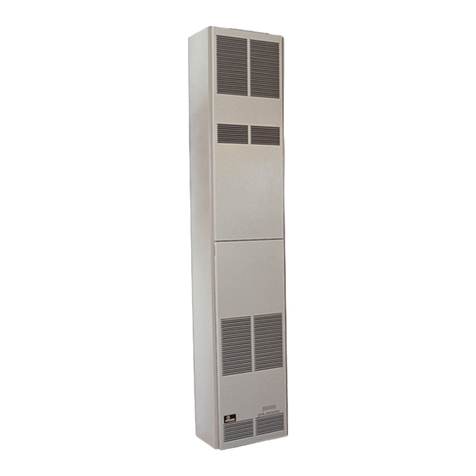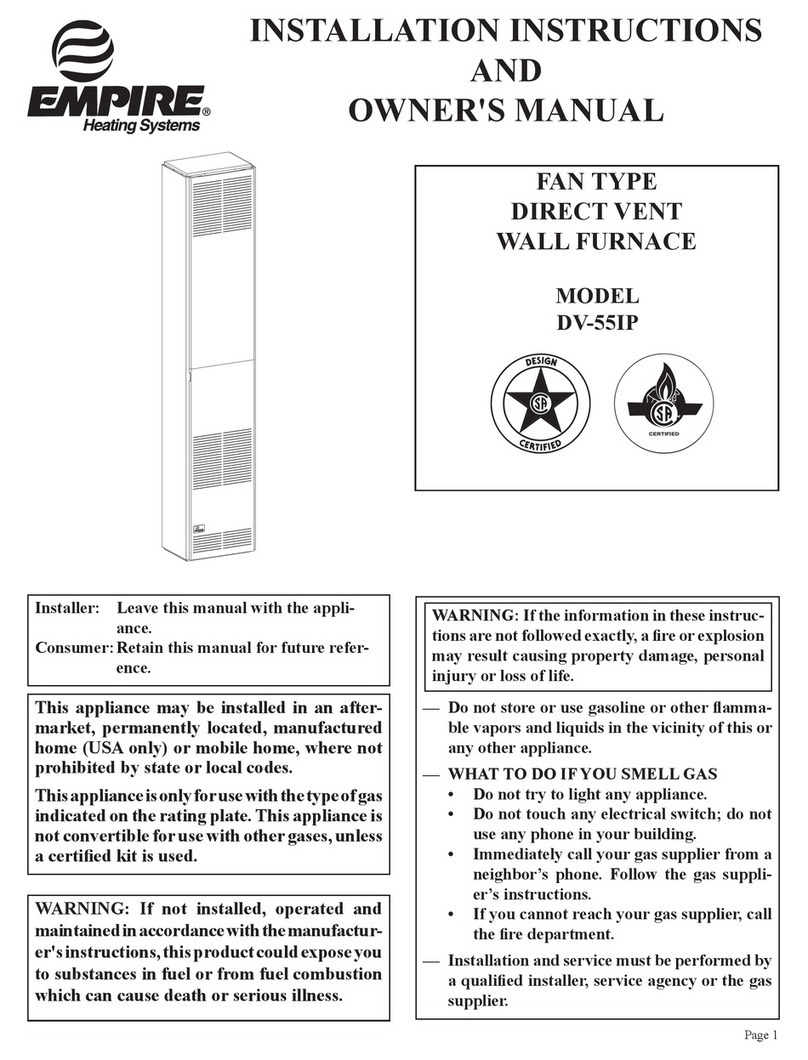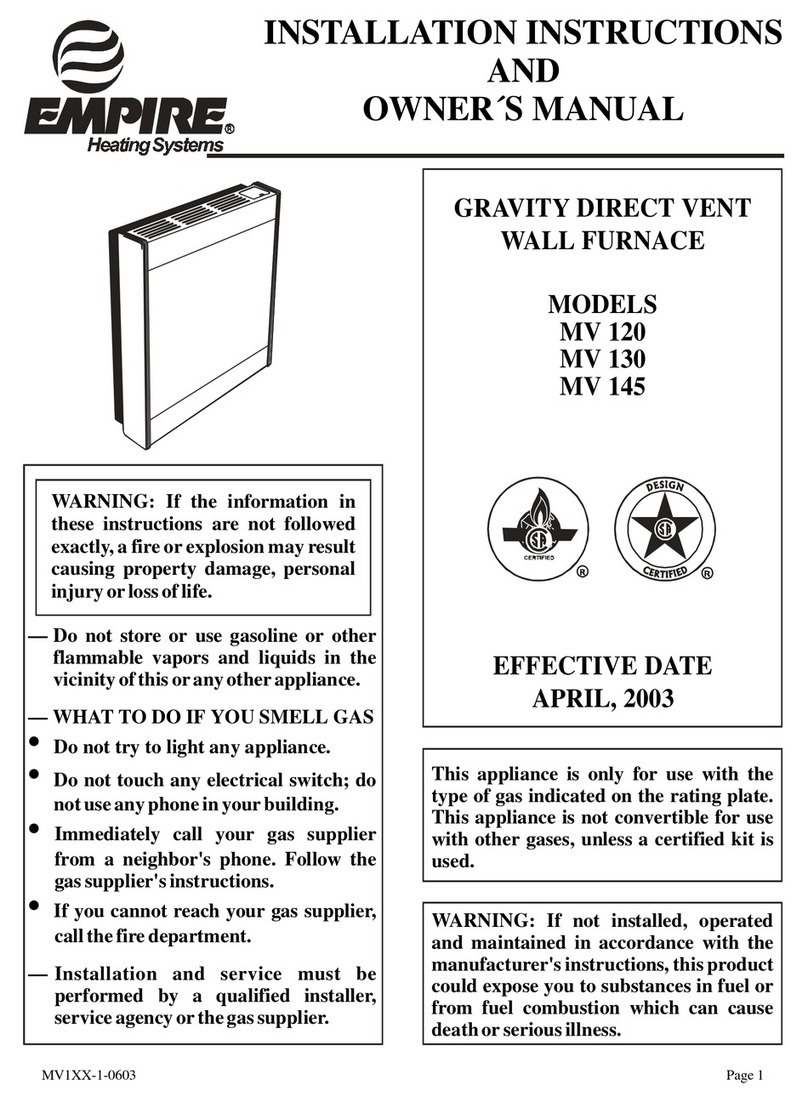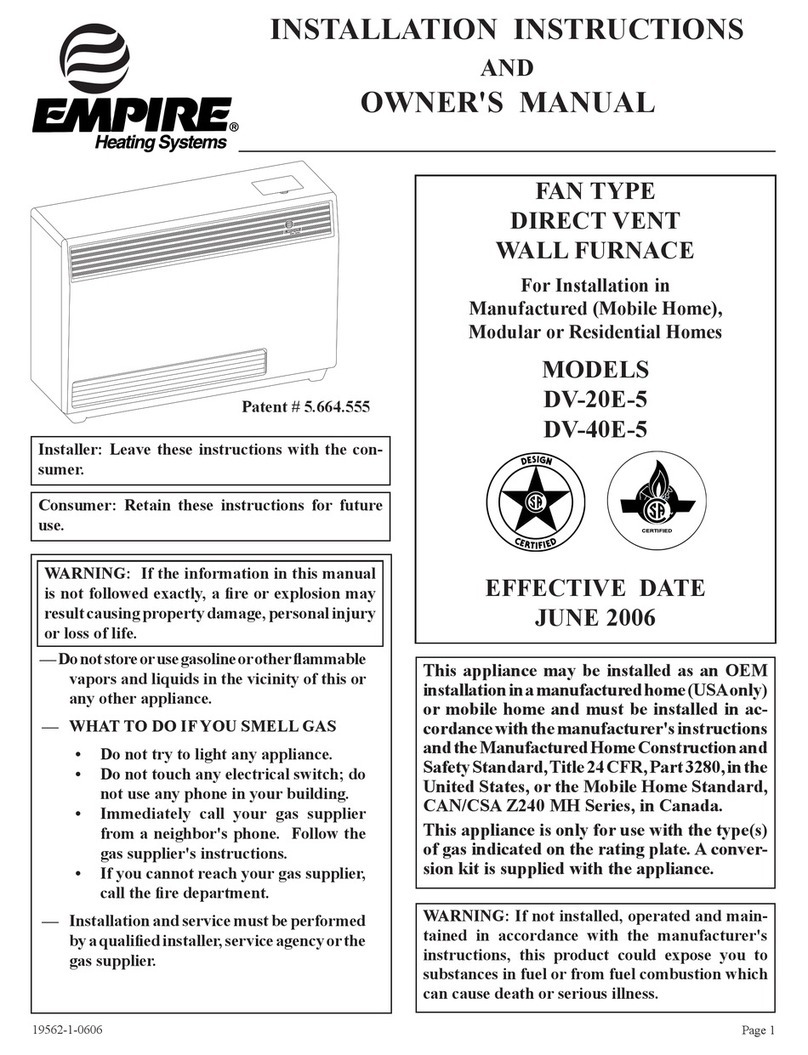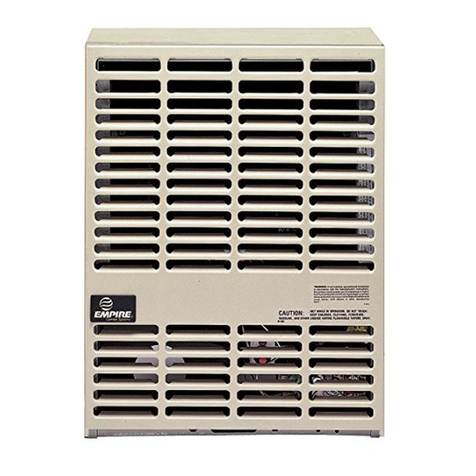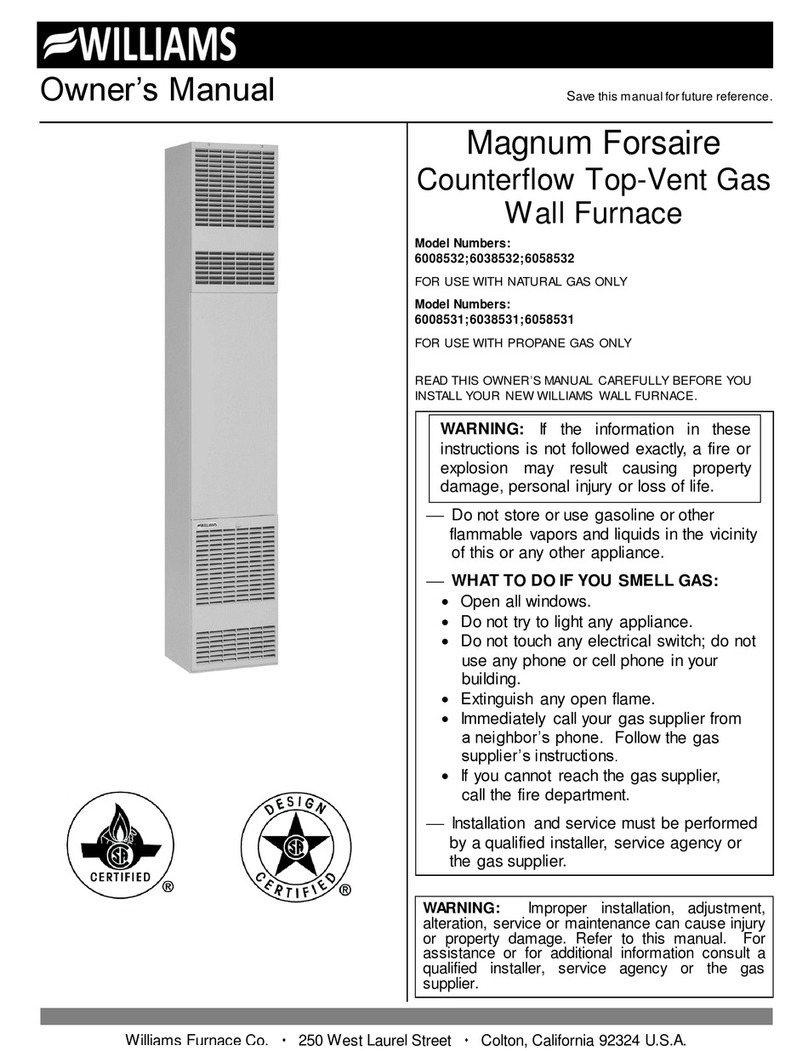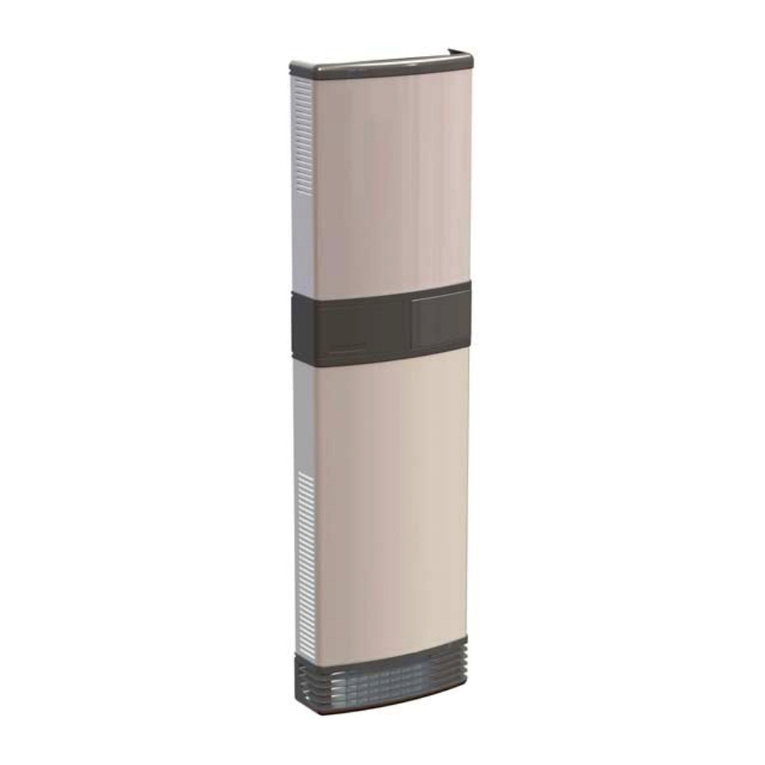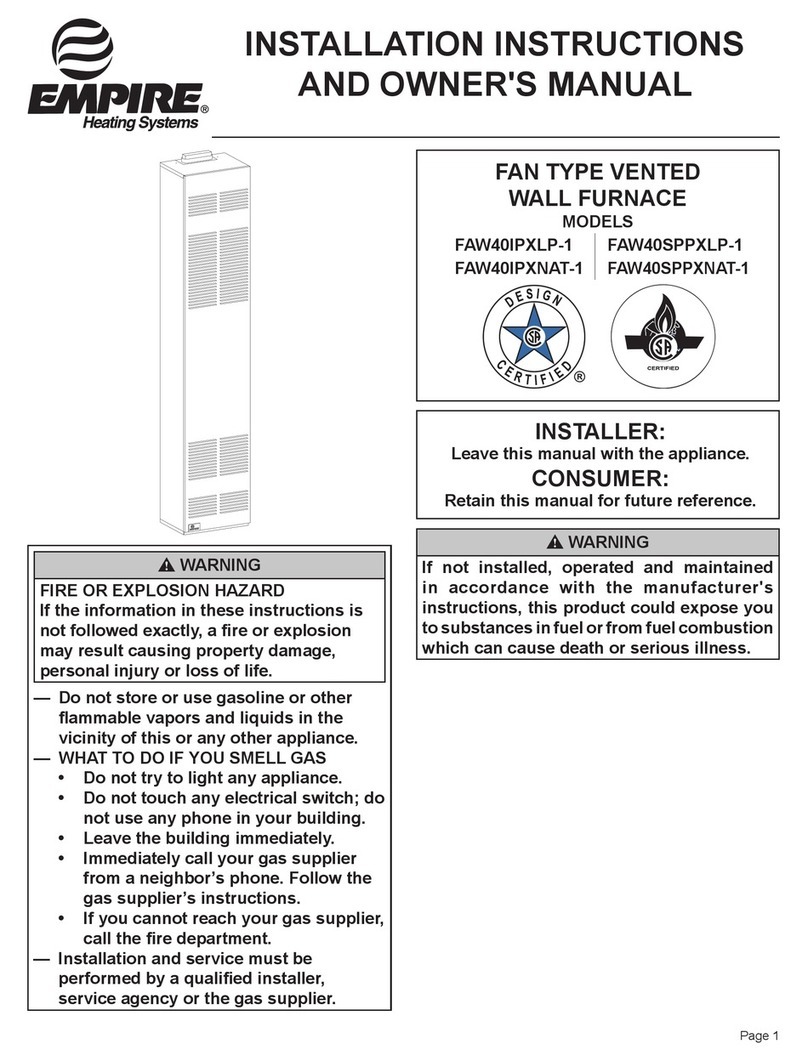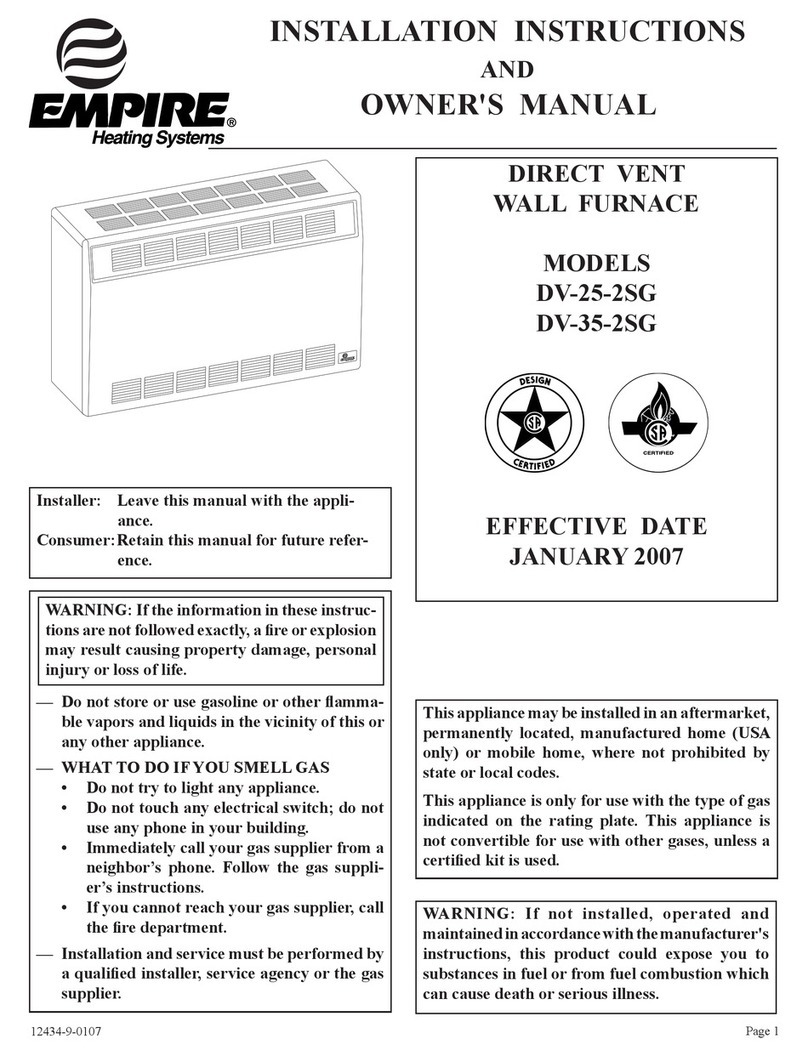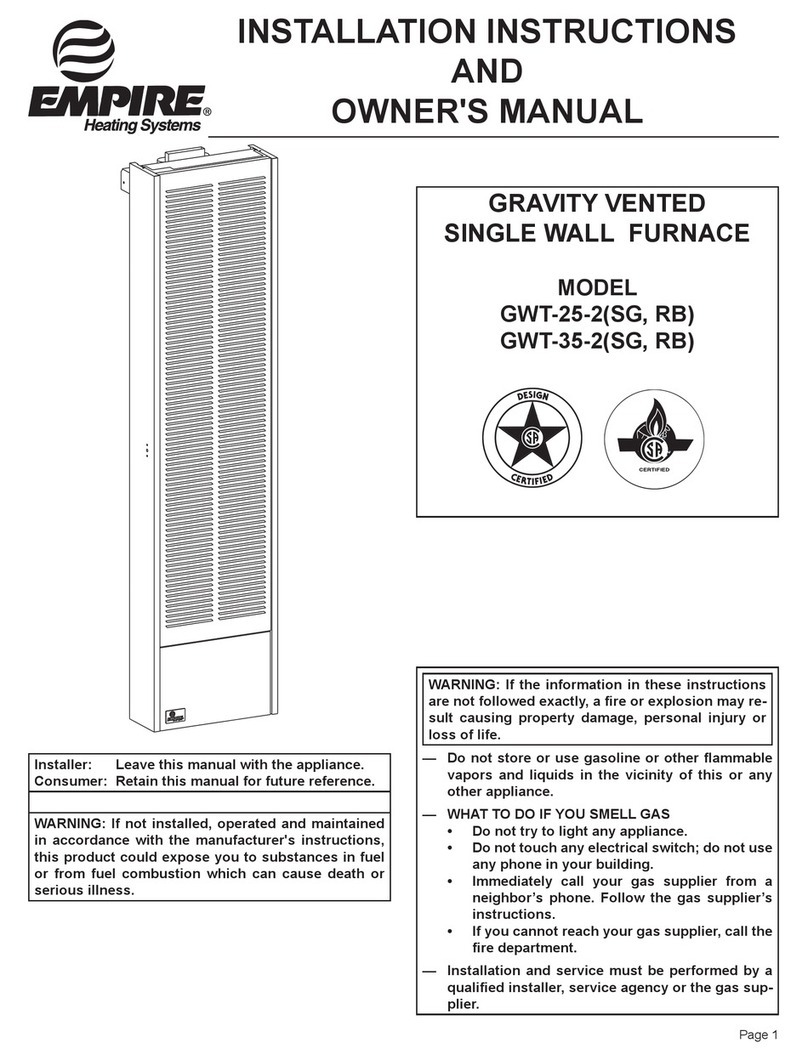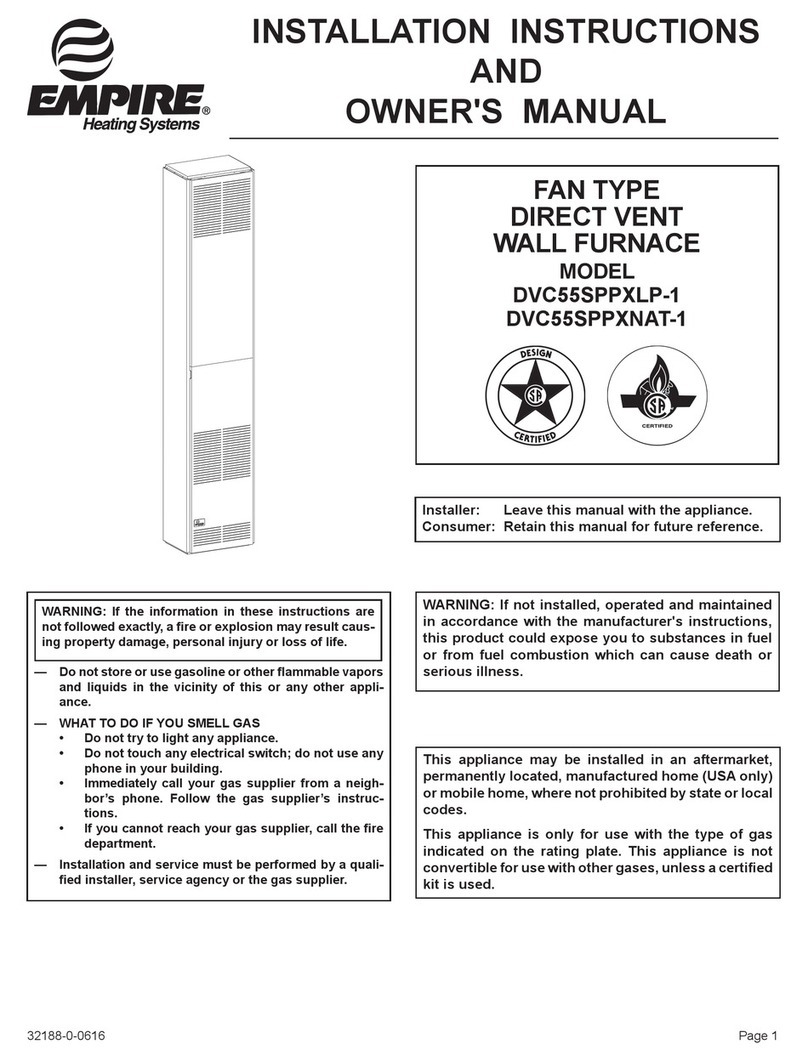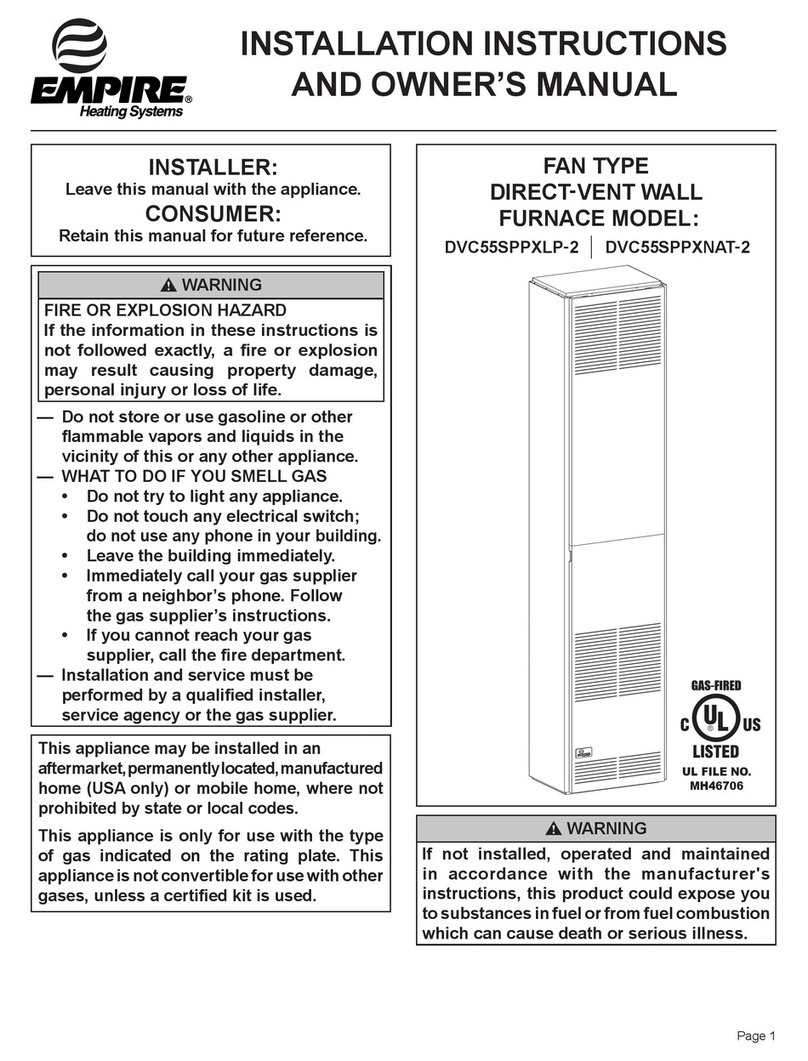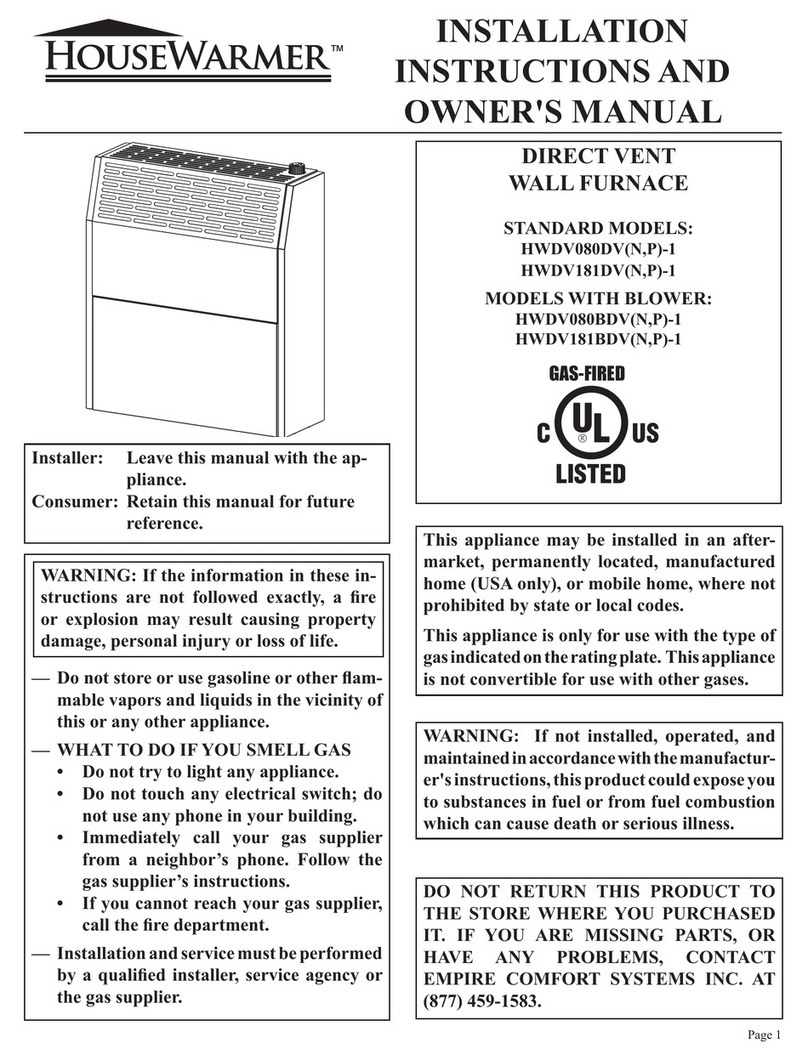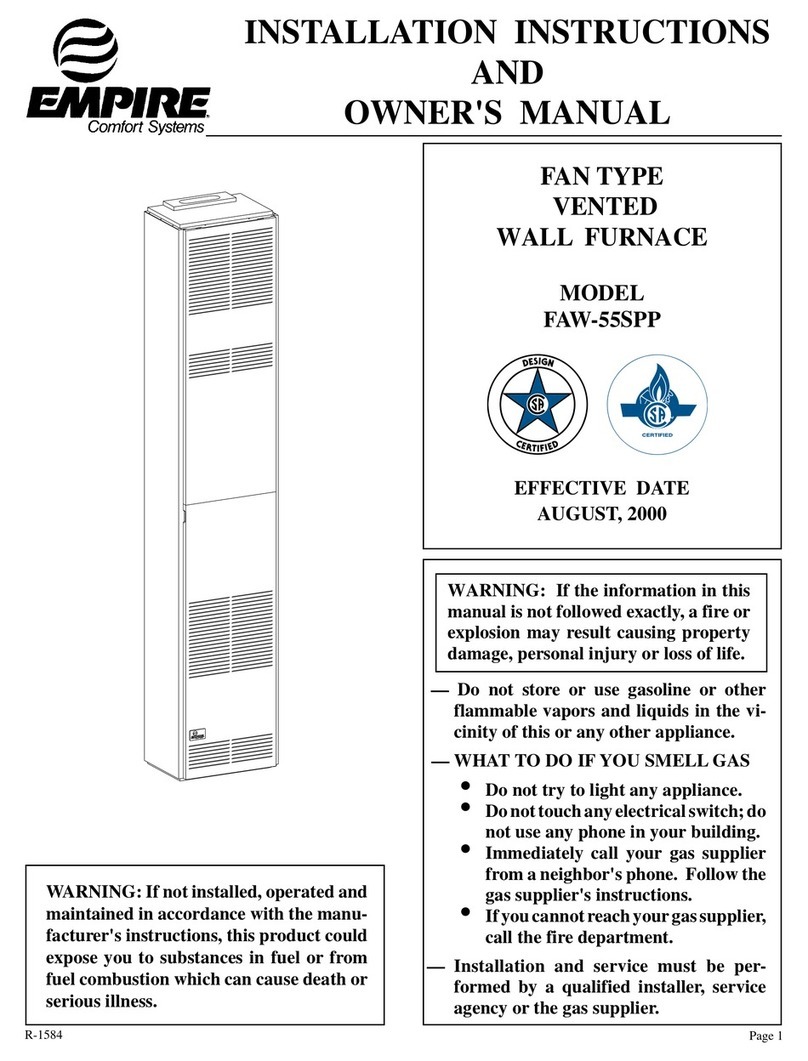
1. Attach 5" (127mm) diameter air inlet tube onto the collar of air drop
assembly. Be sure 5" (127mm) diameter air inlet tube is placed as
far as possible onto the collar of the air drop assembly. Mark the 5"
(127mm) diameter air inlet tube 1/2" (13mm) beyond the outside
wall. Remove 5" (127mm) diameter air inlet tube from collar of air
drop assembly.
2. Attach3" (76mm)diameter flueoutlet tubeonto flueoutlet collaron
combustion chamber. Be sure 3" (76mm) diameter flue outlet tube
isplacedasfaraspossibleontothe collar of flue outlet. Mark the 3"
(76mm)diameterflueoutlettube21/2"(64mm)beyondtheoutside
wall. Remove 3" (76mm) diameter flue outlet tube from collar of
flue outlet on combustion chamber.
3. Markorwraptape completely around the tubesatthemarked points
to help in making a true cut. Do not crimp or enlarge tubes.
Installing The Vent Assembly
1. Place provided caulking beneath the edge of the outside wall plate.
Use additional caulking to correct uneven wall surface, such as
clapboard.
2. Attach 5" (127mm) diameter air inlet tube onto the collar of air drop
assembly. Attach caulked, outside wall plate into the 5" (127mm)
diameter air inlet tube. Position the outside wall plate so that 5"
(127mm) diameter air inlet tube has a slight downward slope to the
outside. The downward slope is necessary to prevent the entry
ofrainwater. Attach outsidewall plateto exteriorwall with(4) #10
x 1 1/2" (38mm) screws provided.
3. Apply furnace cement to 3" (76mm) diameter flue outlet collar on
combustionchamberandto3" (76mm) diameter collar on vent cap.
Attach3" (76mm)diameter flueoutlet tubeonto flueoutlet collaron
combustion chamber. Attach vent cap into the 3" (76mm) diameter
flue outlet tube. Attach vent cap to outside wall plate with (3) #10
x 1/2" (13mm) screws provided.
4. Installation is completed.
Reassembly And Resealing Vent-Air Intake System
When vent-air intake system is removed for servicing the furnace, the
followingstepswillassure proper reassembly and resealing ofthevent-
air intake assembly.
1. Remove old furnace cement from flue outlet collar on combustion
chamber and collar of vent cap. Remove old furnace cement from
both ends of 3" (76mm) diameter flue outlet tube.
2. Remove old caulking beneath the edge of the outside wall plate.
Apply new caulking beneath the edge of the outside wall plate. Use
additionalcaulkingtocorrectunevenwallsurface,suchasclapboard.
3. Attach 5" (127mm) diameter air inlet tube onto the collar of air drop
assembly. Attach caulked, outside wall plate into the 5" (127mm)
diameter air inlet tube. Position the outside wall plate so that 5"
(127mm) diameter air inlet tube has a slight downward slope to the
outside. The downward slope is necessary to prevent the entry
ofrainwater. Attach outsidewall plateto exteriorwall with(4) #10
x 1" (25mm) screws provided.
4. Apply furnace cement to 3" (76mm) diameter flue outlet collar on
combustionchamberandto3" (76mm) diameter collar on vent cap.
Attach 3" (76mm) diameter flue outlet tube onto flue outlet collar
on combustion chamber. Attach vent cap into the 3" (76mm)
diameter flue outlet tube. Attach vent cap to outside wall plate with
(3) #10 x 1/2" (13mm) screws provided.
5. Reassembly and resealing vent-air intake system is completed.
Installing a Vent Near a Window Ledge,
Other Type of Projection or on Vinyl Siding
Direct vent furnaces are designed to be installed on a uniform outside
wall. When the wind comes from any angle (up, down or from either
side), it must hit the vent cap equally over both the air inlet and the flue
outlet portions of the vent. Any wall projection, such as a door or
window casing, which disturbs the wind on one side of the air inlet
section will result in back pressure on the flue section smothering the
flame and eventual pilot outage.
When the vent cap is to be installed on vinyl siding or it appears that a
projection within 6" (152mm) of any side of the air inlet section could
shieldtheairinletsection,theentireventshouldbesupportedawayfrom
thewallatleastthedistanceoftheprojection. 2"x 4"(51mm x102mm)
framing whose outside dimensions match the overall dimensions of the
mountingplateisrecommended. The2"x4"(51mmx102mm)framing
protects vinyl siding from possible warpage or discoloration. All joints
can then be sealed and painted. The wall depth plus the additional depth
of the 2" x 4" (51mm x 102mm) framing should not exceed a total depth
of 13" (330mm) for DV-210/DV-215. (See Figure 3)
Figure 3a
Vinyl siding vent kit, DV-822, is available from Empire Comfort
Systems, Inc. The depth is 3" (76mm), which enables the vent cap to be
extendedawayfromvinylsidingorprojections. Thewalldepthplusthe
additional3"(76mm)depthofthevinylsidingventcapextensionshould
not exceed a total depth of 13" (330mm) for DV-210/DV-215. (See
Figure 3a)
Warning: When vinyl siding vent kit, DV-822 or 2" x 4"
(51mm x 102mm) framing is added to an existing installation
(furnace is installed) do not attempt to add sections of pipe to
theflueoutlettubeorairinlettube. Anairtightsealisrequired
for both tubes. Refer to Parts List, page 9 to order tubes.
Installation on Rugs and Tile
If this appliance is to be installed directly on carpeting, tile, or other
combustible material, other than wood flooring, the appliance shall be
installed on a metal or wood panel extending the full width and depth of
the appliance.
The base referred to above does not mean the fire-proof base as used on
woodstoves. The protectionisprimarilyforrugs thatmay beextremely
thick and light-color tile that may discolor.
Gas Supply
Check all local codes for requirements, especially for the size and type
of gas supply line required. On Natural gas lines less than 15' (4.6m)
long, use 1/2" (13mm) pipe; on longer runs, use 3/4" (19mm) iron pipe
or equal. On LP gas lines please consult LP gas supplier.
Installing a New Main Gas Cock
Each appliance should have its own manual gas cock.
A manual main gas cock should be located in the vicinity of the unit.
Where none exists, or where its size or location is not adequate, contact
your local authorized installer for installation or relocation.
R-1917 Page 5
Figure 3
2 x 4 FRAMING
(51mm x 102mm)
